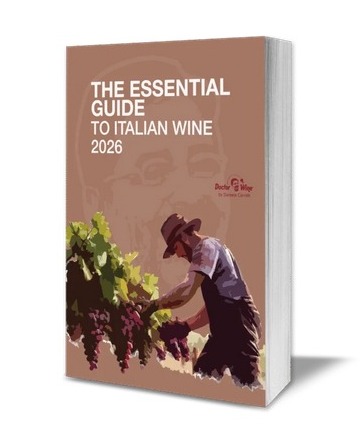
The Essential Guide to Italian Wine 2026 is the latest edition of an annual reference for anyone with even a passing interest in Italian wine. Curated by Daniele Cernilli, the renowned Italian wine critic better known as “DoctorWine”, the guide continues to cement its place as a leading authority in the world of wine. Cernilli, a co-founder of Gambero Rosso and long-time editor of its Vini d’Italia guide, brings decades of insight and credibility to this project, which he launched independently in 2015.
Running to 640 pages, this English-language edition provides detailed profiles of 1,349 wineries and reviews of 3,428 wines, chosen from over 20,000 tasted, a staggering undertaking.
The book is structured by region, with each section introduced with statistics on vineyard area, production volumes, and official wine appellations. These overviews are far from dry. They touch on geography, climate, grape cultivation and how things are evolving. It’s here that Cernilli’s knowledge shines, blending data with thoughtful commentary to bring each region to life.
Each wine is rated on the familiar 100-point scale and wineries receive a separate score of up to three stars based on their consistency, cultural importance and international presence. There’s also a pricing system from A to E, and crucially, this guide is not just for connoisseurs of top-end bottles. In fact, one of its greatest strengths is its focus on value. The guide features a ‘thumbs up’ symbol for 867 wines that score 90 or more points while costing less than €18 in European shops, with many coming in under €10. These budget-friendly gems make the book especially useful for everyday drinkers seeking high quality without the high price.
Beyond the ratings, the book offers something much deeper. Each estate is presented with practical details like contact information, founding date, size, ownership, and a short but informative write-up on the estate’s character and approach. The wine entries themselves include prices, scores, and tasting notes that are concise yet vivid. It’s the kind of guide you can use in all sorts of ways, finding value wines, researching a wine you’ve just encountered in a shop or restaurant, discovering similar wines or simply browsing to expand your knowledge of Italian wine culture.
What makes the guide particularly enjoyable is that, despite its encyclopaedic nature, it invites exploration. One can easily lose track of time flicking through the pages, discovering small family-run estates in lesser-known regions, or plotting an itinerary for a wine-focused holiday. The writing, while informative, has a personable tone and the attention to context, who the winemakers are, how they farm, and what the land means to them, adds richness and relevance.
Priced at €25, The Essential Guide to Italian Wine 2026 is exceptional value in itself. Whether you’re a professional in the trade, a casual enthusiast, or planning your next trip through Italy’s wine regions, this book is an essential companion.
Read the accompanying tasting.













